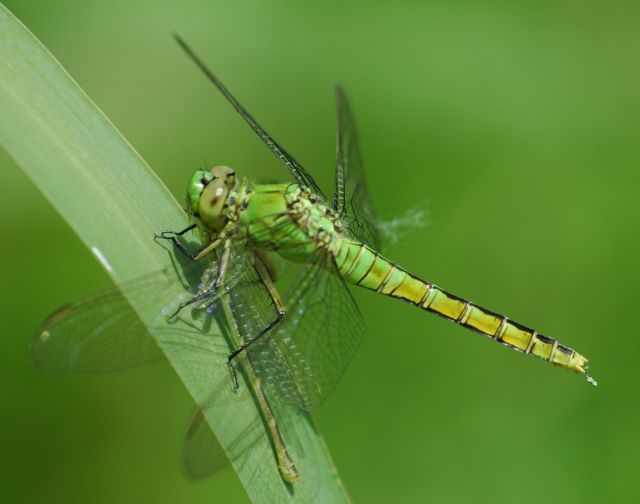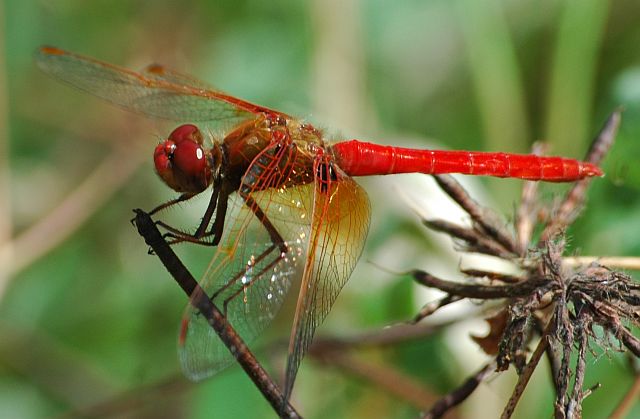

If you stop and watch dragonflies, you will start to recognize patterns of behavior. Learning to interpret these patterns will add much to your enjoyment in observing dragonflies and to your understanding of what is playing out before you.
Perching has many functions: heat regulation, waiting for potential mates or prey, and protecting territories. The perching position and location can also help narrow down the family and provide cues to behavior.
Some species (e.g., Meadowhawks and Skimmers) are perchers -- they fly but they are more often observed perching. Others are fliers (e.g., Darners). These seem to be in constant motion around the pond but can be eventually observed perching if you are persistent.
Meadowhawks tend to perch horizontally on the ground or from a twig like this Cardinal.

Some tend to perch at about a 45o angle, like this Twelve-spotted Skimmer.
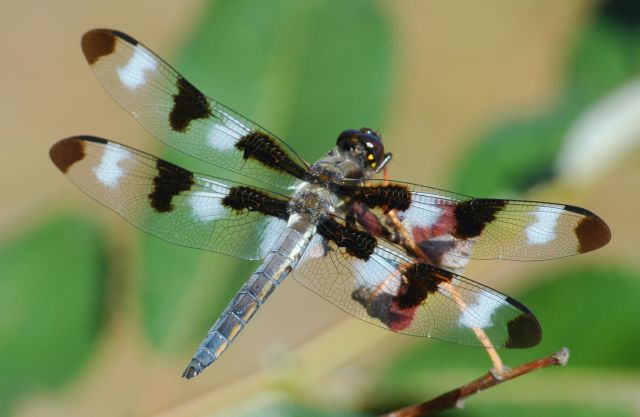
Darners tend to hang almost verically from a branch like this Blue-eyed Darner.
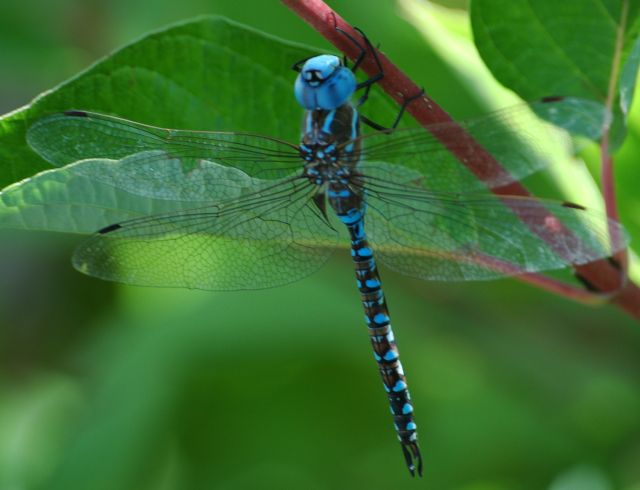
Like other insects, dragonflies are cold blooded and depend on the sun's rays to bring their body temperature high enough for them to fly. However, they can position themselves to maximize or minimize the warming effect of the sun.
Blue Dasher basking (positioning abdomen perpendicular to sun's rays, trying to maximize heat from the morning sun).
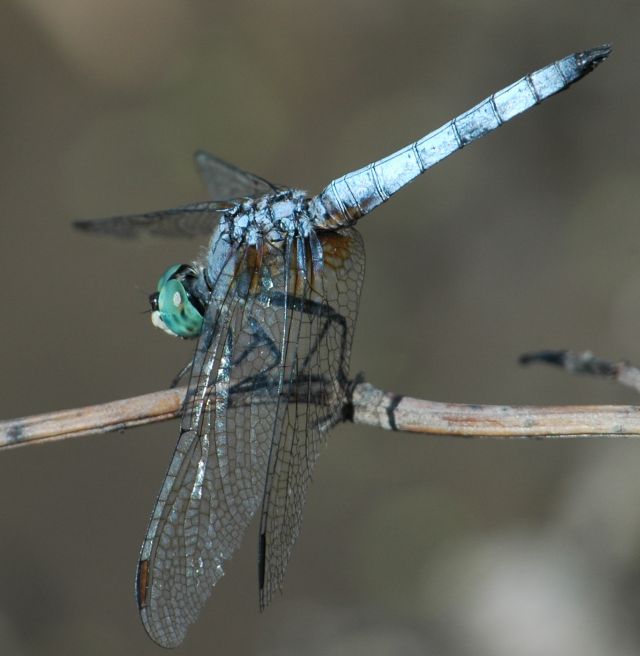
White-faced Meadowhawk obelisking (pointing abdomen towards sun) to reduce heat.
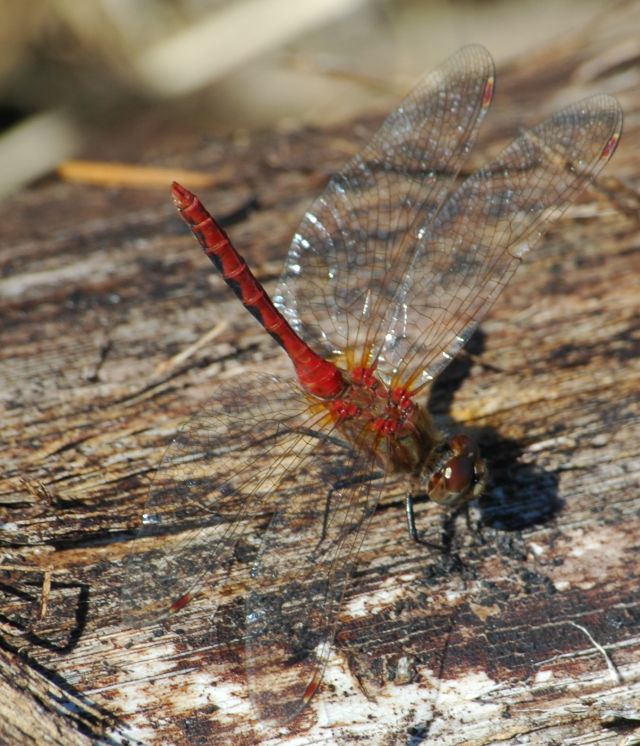
Dragonflies and damselflies have a unique mating routine. First, the male grasps the female around the neck with the appendages extending from his abdomen. Then the female bends her abdomen forward and collects sperm packets from the male. This position is called the mating wheel. Although it seems awkward, the joined pair can fly and even evade predators in this position. Finally, the female oviposits (deposits) her eggs. The details of ovipositing vary by species, but often it is done partially or entirely submerged.
Spreadwings in mating wheel with male abdomen clasping mate's head
and female abdomen collecting sperm packet.
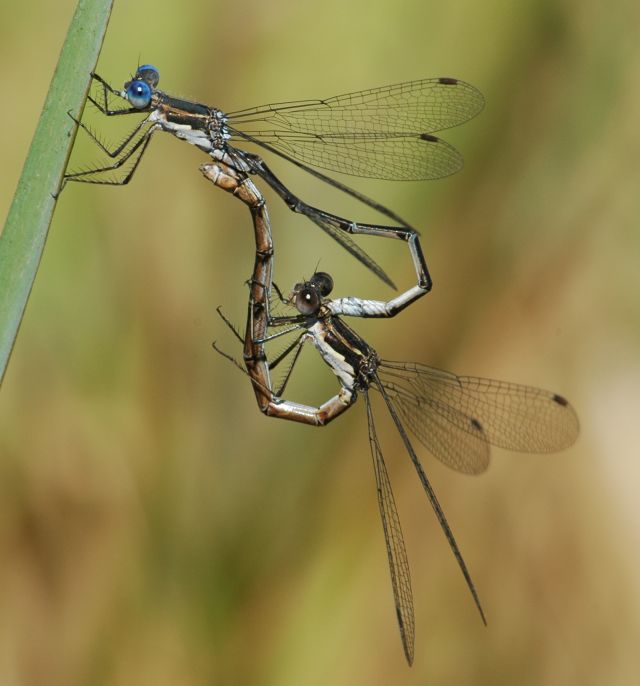
Closeup of female Black Saddlebags ovipositor with eggs ready for ovipositing.
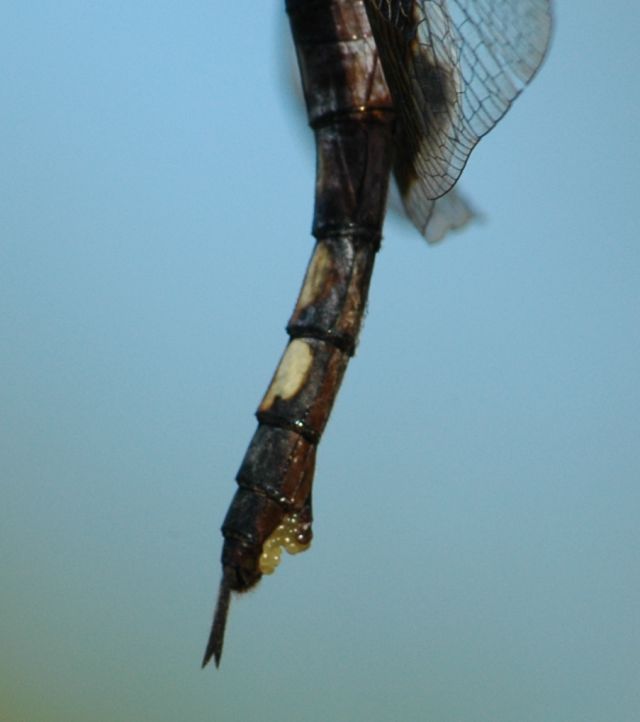
Although the adult lives only a couple weeks, dragons and damsels are predators, feeding on other insects and perhaps other Odonata species.
Bluet eating a bug.

Female Western Pondhawk eating a damselfly.
